4 Alternative Easy Gardening Methods You Should Try
Updated: Apr. 21, 2023
New gardener? No sweat! Skip the stress with no-dig gardens that are good to grow. Gardening is easy with these alternative growing ideas.
Enjoy instant success with one of these interesting—and effective— easy gardening ideas. There’s one sure to fit your personal style and space.
Straw Bale Gardening
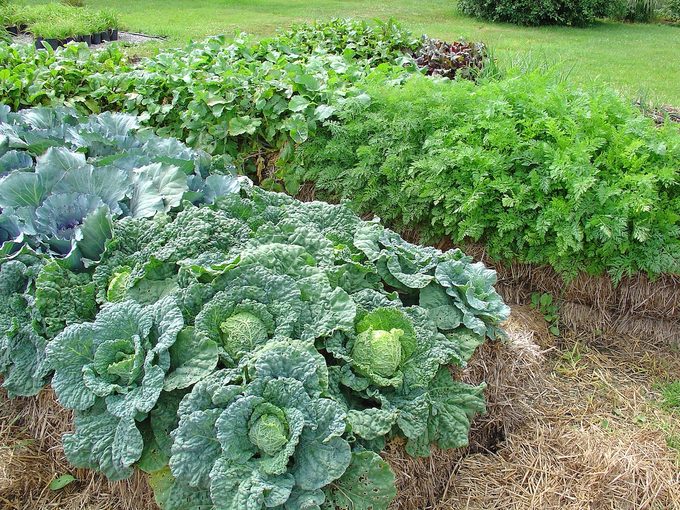
This concept is so popular you can buy a whole book on it, Straw Bale Gardens, by Joel Karsten. Once you get the bales in place, they’re easy to plant and care for. Straw acts as both mulch and compost, keeping plants warm and well fed. And because the bales keep garden plants off the ground, there’s no more stooping!
- Step 1. Get your hands on some straw bales. Any variety will do, but wheat is most likely to be free of weed seeds. Contact a garden center, home-supply store or a local farmer.
- Step 2. Decide on your garden’s location and move the bales to that spot. With the straw shafts running vertically, place them end to end to form rows, or arrange in a pattern. Squares, starbursts and spirals are fun options.
- Step 3. Water and fertilize each bale thoroughly; you may have to do this a couple of times a week if it’s especially dry or warm out. Then allow five to seven days for the bales to “cook.” Once the bales are cool, pick off any weed shoots and spread a 2- to 3-inch layer of garden soil on top.
- Step 4. Using a garden trowel, pull back a clump of straw to make a hole for planting. If planting veggies with deeper root systems, simply go down a bit farther and add additional soil. Plant most any variety of vegetable you wish—peppers, cucumbers, tomatoes, mixed salad greens and herbs are all excellent candidates.
- Step 5. Water plants regularly, or, if bales are side by side, run a soaker hose along the tops. Use a supplemental fertilizer every couple of weeks.
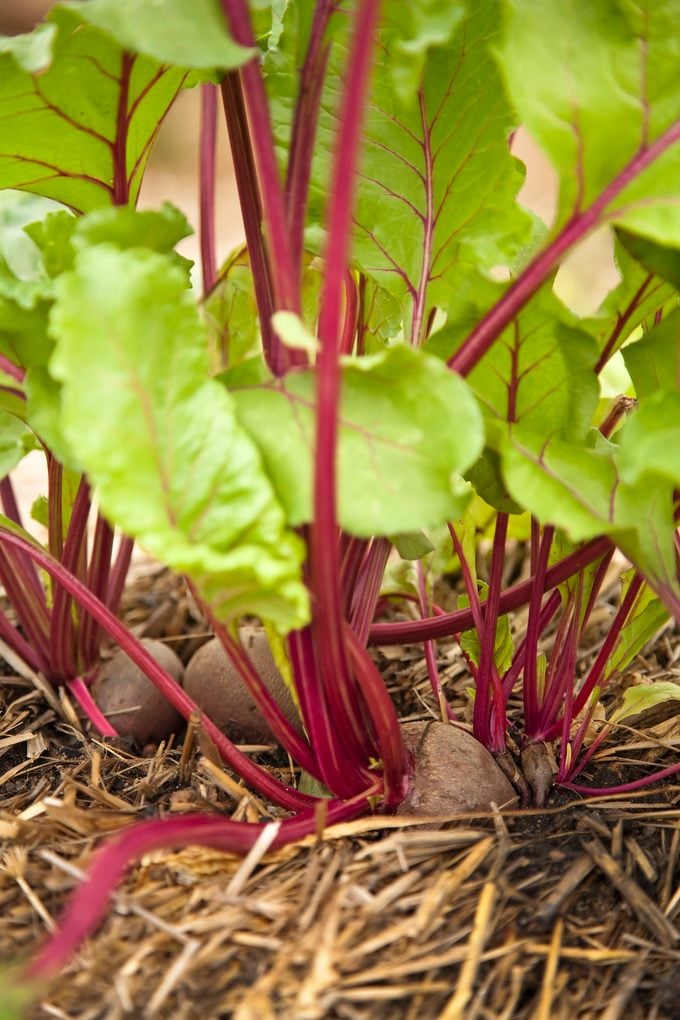
Easy Garden Tip: Give your bales a makeover by surrounding them with a low white picket fence, or plant the corners with trailing nasturtiums and the sides with compact flowers like marigolds and sweet alyssum.
Learn more about straw bale gardening.
Grow Bag Gardening
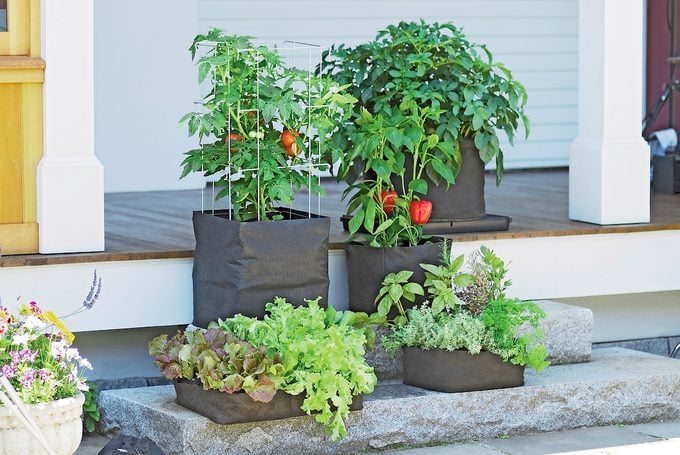
So maybe, at first glance, alternative gardening ideas like, say, planting directly into a grow bag seems like the ultimate in laziness. But take a closer look and you’ll be convinced that success doesn’t always have to come hard.
An ideal option for green-thumb wannabes living in condos, mobile homes or urban jungles, grow bag gardens thrive almost anywhere. There’s no worry about weeds, and no guesswork about amending soil. Plus, it’s even attractive now that you have colorful grow bag options .
- Step 1. Position your bag wherever you like—on a patio, alongside the house, on a balcony—in an area that gets at least six to eight hours of full sun a day (if you’re growing vegetables like tomatoes, cucumbers or peppers; leafy greens can tolerate a few hours less). It’s important to position it first because it can get heavy to move later.
- Step 2. Fill your bag with soil all the way to the top. You don’t have to worry about drainage because these bags were designed to have good drainage built in.
- Step 3. Sow seeds or young plants in bags, and water well. Like most gardens, grow bags benefit from mulch, so pile on any chemical-free dried grass clippings, straw or fallen leaves you have on hand.
Learn how to grow a container garden for herbs.
Herb Spirals
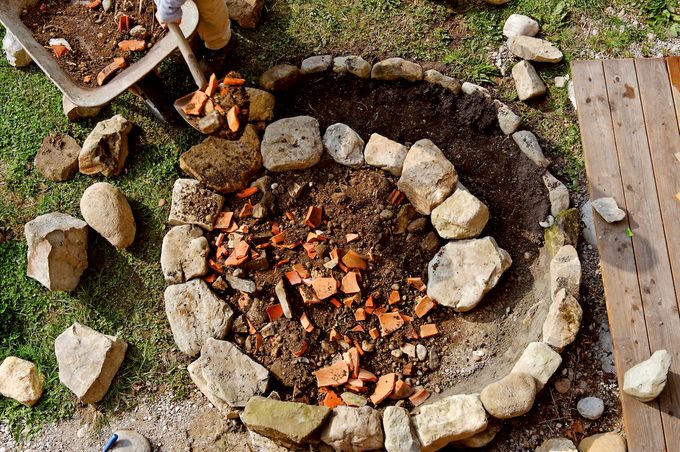
What’s not to love? Herb spirals are an efficient use of space, as good as the soil you fill them with, and can be made out of most any building material—stone, brick, bamboo stakes, cinder block, even PVC pipe. Plus they’re pretty!
- Step 1. Place a wooden stake at the center of your future garden and tie a 2- to 3-foot length of string to it. Secure a can of spray paint to the other end of the string and mark the circumference.
- Step 2. Cover the staked-out circle with cardboard and wet thoroughly.
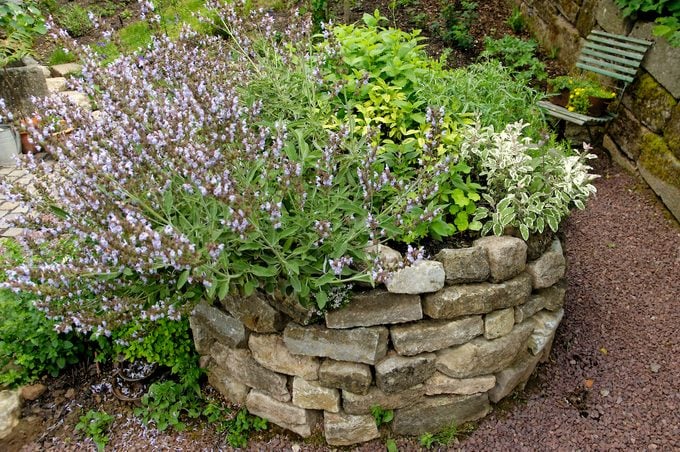
- Step 3. Starting from any point on the outside circle, begin creating a perimeter with whatever material you’ve selected, stacking or measuring higher as you go along. At the halfway point, work your way in to make a spiral that ends near the center of the garden and measures about 3 feet high.
- Step 4. Fill the spiral with garden soil and let settle for a couple of days.
- Step 5. Plant with a variety of herbs. Heat-loving plants like oregano, sage and rosemary will thrive near the top. Chives, parsley and tarragon do well in the middle, and herbs needing more shade and moisture, such as mint and lemon balm, will be happy near the bottom.
Easy Garden Tip: Herb spirals are a great way to make use of a small space. You just need a few feet in your landscape. Then you build it up with stone, brick or other materials and plant your favorite herbs.
Discover 7 easy ways to get free garden plants.
Cinder Block Garden Wall
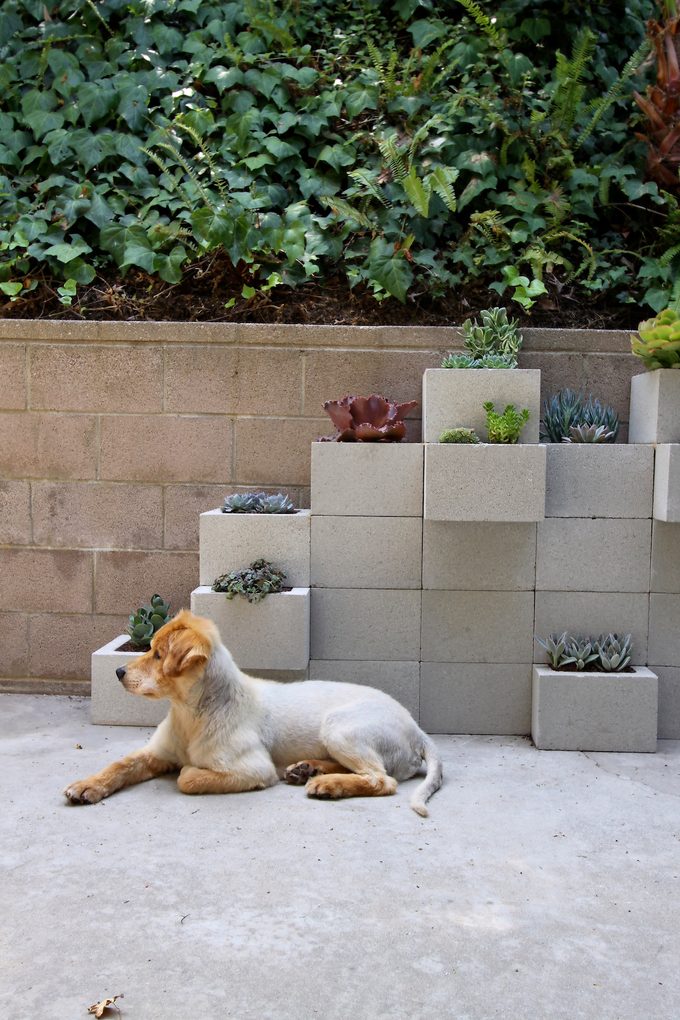
No yard? No problem. Simply collect a couple of dozen cinder blocks and fashion a unique patio garden that’s bursting with a bounty of good eats. These look cool placed against a wall, in a corner or as stand-alone sculptural pieces.
- Step 1. Decide how many plants you’ll include and then prepare the same number of blocks for planting by gluing wire mesh to the bottom of each. Then line the inside of each block opening with landscape fabric.
- Step 2. Stack blocks to form a wall, creating any shape you wish. You can arrange blocks so that the plants grow either out of the tops or out of the sides.
- Step 3. Fill lined blocks with potting mix and slip in plants with smaller root systems, like succulents, herbs, leafy greens and dwarf varieties of your favorite vegetables. Water regularly.
Next, learn how to save money and recycle with cardboard gardening.
